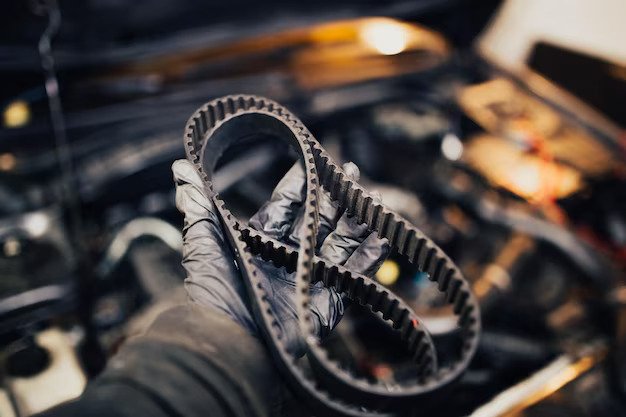Your car’s belts and chains are critical components of the engine’s timing system, responsible for synchronizing the rotation of the engine’s crankshaft and camshaft. Over time, these belts and chains can wear out, stretch, or become damaged, leading to engine performance issues and potential breakdowns. Recognizing the signs that your car’s belts and chains need replacement can help prevent costly repairs and ensure the continued reliability of your vehicle. Here are ten signs to watch out for:
1. Squealing or Squeaking Noise:
A high-pitched squealing or squeaking noise coming from the engine area could indicate a loose or worn-out belt. Belts may produce noise when they slip or fail to maintain proper tension, signaling the need for replacement.
2. Engine Misfires or Rough Idling:
A worn-out timing belt or chain can cause the engine to misfire or idle roughly. This occurs when the timing between the crankshaft and camshaft becomes out of sync, resulting in poor engine performance and a noticeable decrease in power.
3. Engine Won’t Start:
A broken or damaged timing belt or chain can prevent the engine from starting altogether. If the timing belt or chain fails, the engine’s valves may collide with the pistons, causing severe damage and rendering the engine inoperable.
4. Engine Vibrations:
Excessive engine vibrations, especially at idle or low speeds, may indicate a problem with the timing system. Worn-out belts or chains can cause irregular engine timing, leading to vibrations and shaking felt throughout the vehicle.
5. Visible Cracks or Fraying:
Inspect the belts for any visible signs of damage, such as cracks, fraying, or splitting. These are clear indicators that the belts are worn out and in need of replacement to prevent sudden failure.
6. Oil or Fluid Leaks:
Leaks from the timing cover or front of the engine may indicate a leaking seal or gasket, which can contaminate the belts or chains with oil or other fluids. Oil-soaked belts or chains are prone to slipping and premature wear, necessitating replacement.
7. Engine Overheating:
A malfunctioning water pump, often driven by a serpentine belt, can cause the engine to overheat. If the water pump fails due to a worn-out belt, coolant circulation may be compromised, leading to overheating and potential engine damage.
8. Reduced Fuel Efficiency:
A worn-out timing belt or chain can cause the engine’s timing to become inefficient, resulting in decreased fuel efficiency. If you notice a sudden drop in gas mileage, it may be due to a failing timing system component.
9. Dashboard Warning Lights:
Modern vehicles are equipped with dashboard warning lights that illuminate when there is a problem with the engine or timing system. If the check engine light or timing belt warning light appears on your dashboard, it’s essential to have the issue diagnosed and addressed promptly.
10. Mileage and Maintenance Schedule:
Consult your car’s owner’s manual for recommended replacement intervals for timing belts and chains. Most manufacturers recommend replacing timing belts every 60,000 to 100,000 miles, while timing chains may last longer but still require periodic inspection and maintenance.
Paying attention to these ten signs can help you identify when your car’s belts and chains need replacement. Regular maintenance and timely replacement of timing system components are essential for preventing costly repairs and maintaining the reliability of your vehicle’s engine. If you notice any of these signs or are approaching the recommended replacement interval, it’s crucial to have your belts and chains inspected and replaced by a qualified mechanic to ensure the continued safety and performance of your vehicle.











